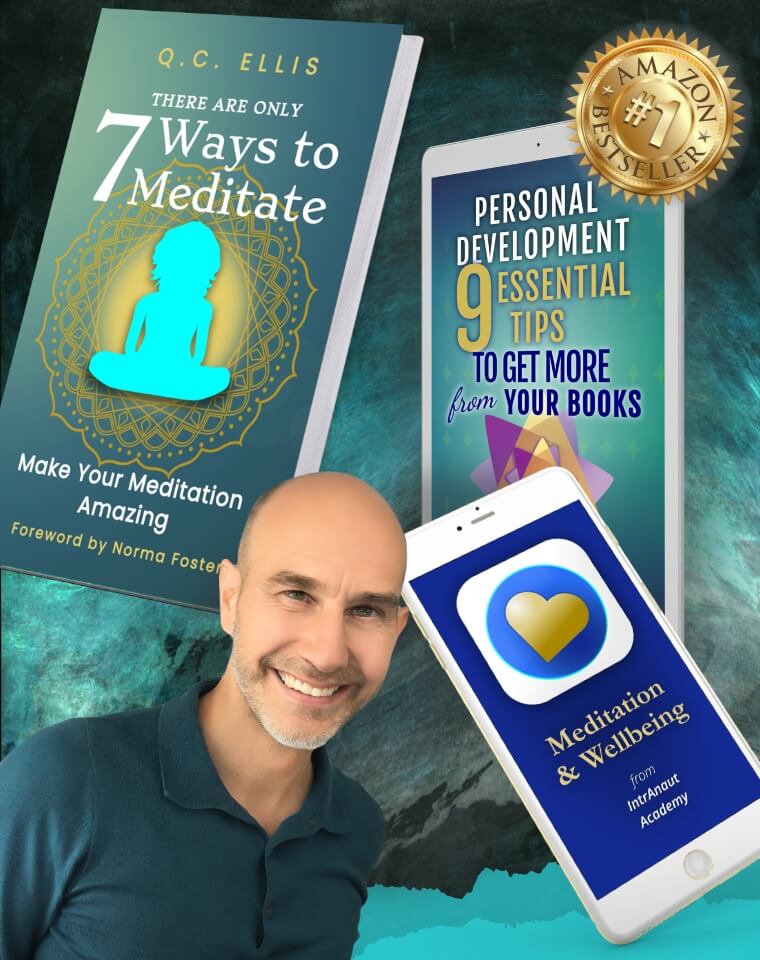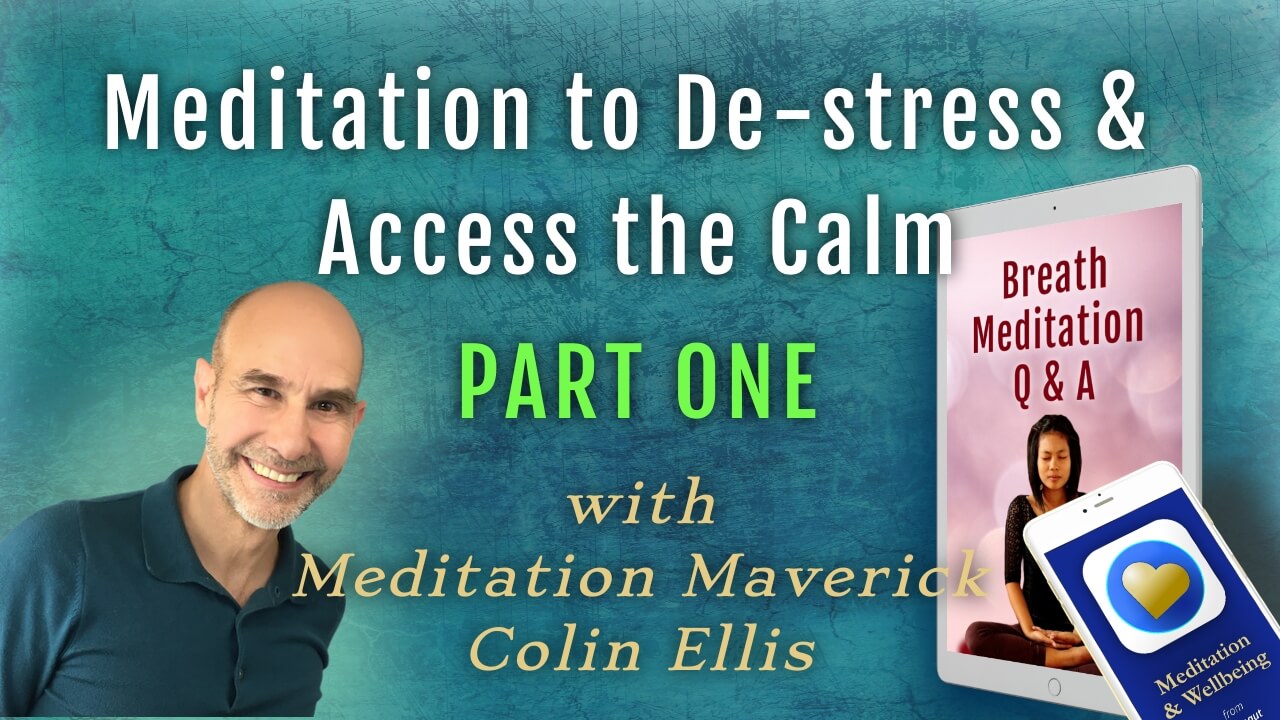By Meditation Maverick, Colin Ellis, AKA author Q.C. Ellis
To download the whole Q&A on Breath Meditation, click HERE for the pdf
(opens in a new tab or may download automatically. On the app – use the direct link within the app)
Before we get into the Q&A, let’s answer some initial questions about what breathing meditation is and why it’s important.
What is breath meditation and is it different from mindfulness?
Please note, breath meditation is different from a breathing technique or breath yoga. While you meditate on the breath, there is no control of the breath.
If a teacher asks you to control the breath, they are either: using a breath-technique as a preparation for meditation, or conflating meditation with other things.
Breath meditation is just one of the formal meditations part of your mindfulness practice. Formal, in that you decide to take a few minutes out of your day to meditate – to sit, stand, or lie down, be still and focus exclusively on your meditation.
It’s best done as an important part of your daily routine.
Mindfulness usually comprises a formal meditation practice, plus other mindfulness exercises you do throughout your day. Mindfulness is 90% informal practices and 10% formal meditations. The formal meditations enhance your out of meditation, informal practice, and vice versa.
Breath meditation has extra elements (mind-technologies), so although some call it mindfulness, others call it something else (Concentration/Samatha meditation). I call it an Engrossed Attention style meditation. For instance, becoming focused upon one thing – usually the sensations in the nostrils or the rise and fall of the tummy. This focused, Engrossed Attention, gives rise to absorption.
What is absorption?
When you fall asleep, you will notice you become warm and cosy, feeling pleasantly comfortable, then the world around you disappears. This is what I call the cocoon effect, and happens during meditation. However, during meditation you do not become unconscious. This is because of Engrossed Attention.
It also happens when you become engrossed while watching TV (or reading a book). You no longer notice what’s happening around you.
You become engrossed/absorbed when you are focusing on the breath during meditation.
What about distractions?
One way to look at the breath meditation is to say:
When you’re distracted during meditation, this is because of a little absorption releasing a pocket of accumulated stress. The bubble of stress rises into your mind (or emotions or body) as a thought, feeling, or sensation, which distracts you.
The reason you can become better at breath meditation is because your accumulated stress levels reduce. Therefore, there are fewer (of the big) pockets of stress to bubble up.
Not only are you training your mind to stay still and focus on one thing. At the same time, you are also releasing big chunks of accumulated stress! The distractions make it seem as if you are not doing as well as you want, when you are actually releasing stress.
Distractions are an important part of your breath meditation practice.
I cannot meditate
For many people, their first attempts at meditation are frustrating and they end up telling lies to themselves such as “I cannot meditate”.
Of course, there are some cases where a person genuinely cannot meditate because of an energy imbalance. Which means they can meditate once they correct the imbalance. Talk to the meditation teacher, Colin Ellis, if you feel you cannot meditate.
One of the reasons why many people have tried and failed to meditate is due to mistaken beliefs about what meditation is, or entails. For instance, you are not:
- Trying to empty your mind.
- Trying to stop your thoughts.
- Trying to relax (although letting go of any tension or tightness is a big part of meditation).
- Attaining a calm, peaceful, blissful state – or else you’ve failed.
The above is a short list. There are others in my book – see below.
For most of us, there was a time when we couldn’t ride a bicycle, but after several frustrating attempts, we got the hang of it. This is true for many things we have learned. As children, we did a lot of this fumbling around until we got it right.
It was OK then, because it is the only way to learn and progress. Now, as adults, many of us are less likely to want to go through this stage. That’s because we do not want to be seen as foolish and have made the process stressful for ourselves. By the way, mindfulness can help you with that.
It is just a case of getting over the initial, and frustrating, training period. Knowing the benefits of meditation can help you get past this beginner’s part of the learning process.
Another caveat: you need correct, clear, and precise instructions for meditation. That’s why I wrote the book, “There Are Only 7 Ways to Meditate : Make Your Meditation Amazing”.
-
About the Author
Colin (Q.C. Ellis) has been on meditation retreats in silence and solitude for longer than some monks. He has been studying meditation for over 23 years.
Known as a meditation maverick, and creator of IntrAnaut™ Meditation, he teaches methods to awaken your body’s natural restorative abilities and fire up your inbuilt happiness.
Keeping it real and grounded in personal experience, he is a Transformation Coach, and founder of IntrAnaut™ Academy.
In person, Colin is approachable and would love to hear from you. For ways to connect, click HERE – ColinEllis.info
For additional resources, download his FREE, IntrAnaut Meditation mobile app with the QR code below or tap HERE


